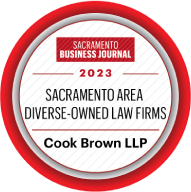The Coronavirus Aid, Relief, and Economic Security Act (CARES) was signed into law on March 27, 2020, adopting the Paycheck Protection Program (PPP) for small businesses and the Take Responsibility for Workers and Families Act that provides temporary Federal Pandemic Unemployment Compensation (FPUC) to laid-off employees. Both laws will provide unprecedented aid to businesses and workers affected by the COVID-19 health crisis and will require immediate action in order to apply for these important benefits.
Forgivable Business Loans
The Paycheck Protection Program (“PPP”) provides loans to small businesses (less than 500 employees) with generous loan forgiveness provisions if used for specified business expenses, most principally payroll expenses. Beginning April 3, 2020, Small Business Administration (“SBA”) approved lenders may start accepting applications for small businesses. Self-employed individuals (including independent contractors) can apply beginning April 10, 2020. The application period closes on June 30, 2020.
The program contains a myriad of requirements, but in essence, a business may seek a PPP loan based on the average total monthly payments for payroll costs incurred during the one-year period before the date that the loan is made multiplied by 2.5 or $10,000,000, whichever is less. There are alternative methods for calculating average payroll costs for seasonal employers and for small businesses that were not in business during the entire one-year period before the loan date. Details regarding what are permissible payroll costs for purposes of loan values are contained in the PPP.
Companies that qualify for loan proceeds may use the funds towards specified costs including employee salaries (which includes, hourly pay and commissions), group health care benefit costs and insurance premiums, expenses related to medical or family leave, mortgage obligation interest, rent, utilities, and interest incurred on debt incurred before February 15, 2020.
These loans contain interest rates and payback obligations like any other SBA loan, but the PPP has directed that businesses will be eligible for loan forgiveness for amounts borrowed and spent for rent, payroll costs, and certain utility and mortgage costs during the eight-week period after the loan’s origination date. (PPP excludes payroll costs of individual employee compensation in excess of an annual salary of $100,000).
There are other aspects of the program that differ from traditional SBA loans, including a no prepayment penalty and that the business need not demonstrate that alternative sources of credit are available. Notably, no personal guarantee or collateral is required and the loans are considered “nonrecourse” against shareholders or partners of the business. The Treasury has now posted the PPP loan application form and eligible businesses are encouraged to act quickly.
Enhanced Federal Unemployment Benefits
The new CARES law also sets aside funds to help those who have been subject to a lay-off or are “unable to work” due to covered COVID-19 related reasons. Specifically, unemployed workers will be eligible to receive extended federal unemployment insurance (UI) benefits at a rate of $600 per week through July 31, 2020. These benefits are in addition to unemployment benefits provided by the state. Since California’s unemployment benefit caps at $450 per week limit, this additional federal benefit could provide substantial wage replacement to laid-off staff. House Ways and Means Chair Richard Neal issued a statement that “[t]he FPUC, combined with the underlying state unemployment benefit, would replace 100 percent of wages for the average U.S. worker… State UC (unemployment insurance compensation) programs would be fully reimbursed for the cost of administering the supplement and for the cost of the supplement itself.”
It is important to note that UI benefits are not available to employees who are able to work from home by telecommuting or teleworking. (Workers receiving paid sick leave under the FFCRA would also not be eligible to receive unemployment benefits as they are not “unemployed”).
As stated, in order to qualify for benefits, an individual must be laid-off, unemployed or unable to work because of a COVID-19 related reason including a COVID-19 diagnosis or symptoms (and is seeking a medical diagnosis), the individual is providing care for a family member in their household diagnosed with COVID-19, a child or other person in the household for which the individual is a primary caregiver is unable to attend school or another facility that is closed as a direct result of the pandemic, or the individual is unable to go to work because of a quarantine imposed or has to quit their job as a direct result of COVID-19.
The federal law also expands unemployment eligibility for independent contractors and self-employed workers who traditionally would not qualify for benefits. In addition, those who do not have sufficient work history to be eligible and individuals who were not able to start a new job or contract due to the COVID-19 health emergency would be eligible for unemployment compensation under this law.
California’s Governor recently signed an executive order waiving the seven day waiting period for California unemployment insurance benefits (which also applies to FPUC) giving laid-off workers more immediate relief. That said, EDD has been barraged with claim filings so the wait to receive benefits may extend beyond the seven day period. We anticipate additional guidance from the U.S. Department of Labor in the coming weeks.

